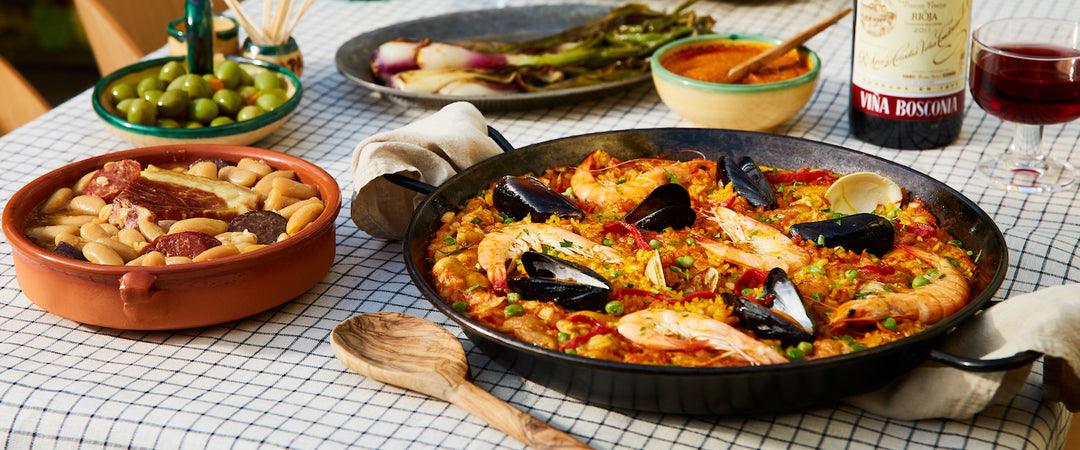March 2025 Tinto Club
  
|
Monte Pío 2021 "Mecoso" EspadeiroRegular Price: $39.99
Club Price: $33.99
|
Casa Monte Pio was founded in 1979 by Jose María Martinez; now his grandson Pablo Martinez carries the family tradition as the owner and winemaker. Pablo’s passion lies in the vineyard – he realized this after a brief career in accounting. Upon his return to the wine industry, he has dedicated himself to organic viticulture and craft wine production. His vineyards are located within walking distance to their family home, located in the heart of the Val do Salnés near the Rio Umia.
In Pablo's own words:
“We are conscious that the secret of a good wine is in the soil. To make the most out of our native varieties and to obtain the best grapes, each harvest we interpret the vineyards in a different way, considering each vine like an individual and living being. For these reason, we focus most of our effort working on the vineyard, because after all, what defines a wine is all the work behind a bottle.
For us, our wines are the result of the hallmarks of our history, where the ground and the grapes reach their uttermost expression.” – Pablo Martinez
Now, normally when we hear and think of the Val Do Salnes and of Rias Baixas in general, we usually think of white wine, more specifically of Albariño. After all, some of Rias Baixas' most famous Albariños hail from the Val do Salnes. Not often do we think "red wine" when we think of the Galician shores. That's why, this month, we have chosen a red wine from this location. In addition to being a red wine from a white wine region, it is also a red wine made from a grape varietal most of us have probably never heard of it: Espadeiro. This varietal is confined to being grown in Rias Baixas, along the Minho river and across the river in Portugal's Vinho Verde region, where it is know as Espadal. Fun fact: one of our MOST popular rose Vinho Verdes made by Quinta da Raza, is made of (mostly) this grape. It is officially classified by UC Davis as Tinta Amarella, a grape of Portuguese origin.
The grapes are grown in a single sandy soil vineyard with 1500 vines trained on espalier trellising. This system is very common to the region because it keeps the vines higher off the ground and allows wind to circulate underneath, helping dry things out between rains and mitigating the risk of fungal diseases like mildew. The vines are on average 40 years old. The weather in this part of Spain is very moderate, averaging a mere 60ºF with lots of rain, even in the summer. 2021 was a bit of an exception, about 1ºF warmer than normal and dryer. Still, the cool climate results in a fresh, fruit forward wine with a low 11.5% alcohol. In the glass, it is a dark cherry red. The nose is filled with red fruit, balsamic and floral, with a slight spice and a mineral background note. The palate is full of fresh fruit, with a nice long finish with balsamic and floral tones. This might be real nice to have with light red fish stews or a spicy tinned fish (I am thinking mackerel), or a grilled octopus that you would normally have with a white wine. Being so light and fruity, it's a good wine to chill a bit and then serve to a know-it-all wine-nerd friend in a brown bag with a call to action: "guess correctly what this is and I will buy you a month of the Spanish Table wine club :-)"
  
|
Pascona ”Classic“
|
While some of our other Wine Club Selections this month come from larger producers, we’ve gone to the very opposite end of the production spectrum with Pascona’s ‘Classic’. While large scale production can be artful in its own right, we often find more tender, distinct wines coming out of smaller operations. But first, let look at the region Pascona calls home.

The Monsant region
If we are talking about the hidden gem wine regions of Spain, Monsant is often the first or second name that comes up. Very simply, it can be described as the soft rolling hills surrounding the mountainous Priorat. Priorat is one of the only two regions in Spain to hold the prestigious DOCa status, and its wines can often be scarce, expensive, and in need of bottle age. Conversely, Monsant’s wines tend to be much more plush and easy drinking, all whilst coming from essentially next door.

The family behind Pascona

Toni Ripoll
While bulk production is comparatively more common in Monsant, you’d be amiss to pass up some of the smaller operations producing here. Cellar Pascona is a small, family owned winery that has been carefully cultivating some 20 hectares in the region since 1991. Toni Ripoll is the head winemaker and owner, who originally studied electrical engineering but later adopted his father’s vocation for viticulture, and learned from him. The grapes blending into the ‘Classic’ are, as the name suggests, classic to the Monsant. Garnatxa and Carinyena (Garnacha and Carignan) are the stars of the show here, and have been in Monsant for well over a few hundred years.

Pons Vineyard
‘Pons’ is the name of the single vineyard that supplies the fruit for the ‘Classic’. It’s predominantly granitic sandy soil, but also contains a blend of clay and black slate which aid with water retention and minerality, respectively. Everything is hand harvested, and fermentation is conducted with whole berry, spontaneous, and native yeast methods. 12 months in French oak barrels bequeath the wine with warming spices, softness and structure. The nose and palate suggest a blend of mature dark fruits such as black cherry and fig, while the finish is composed of toasted vanilla and warmer wood notes. There is a ripeness and freshness to this wine, and after letting it breathe, its harder edges give way to a smooth, full-bodied palate. This is a wine that will dance well with herby roast pork dishes and risottos.



